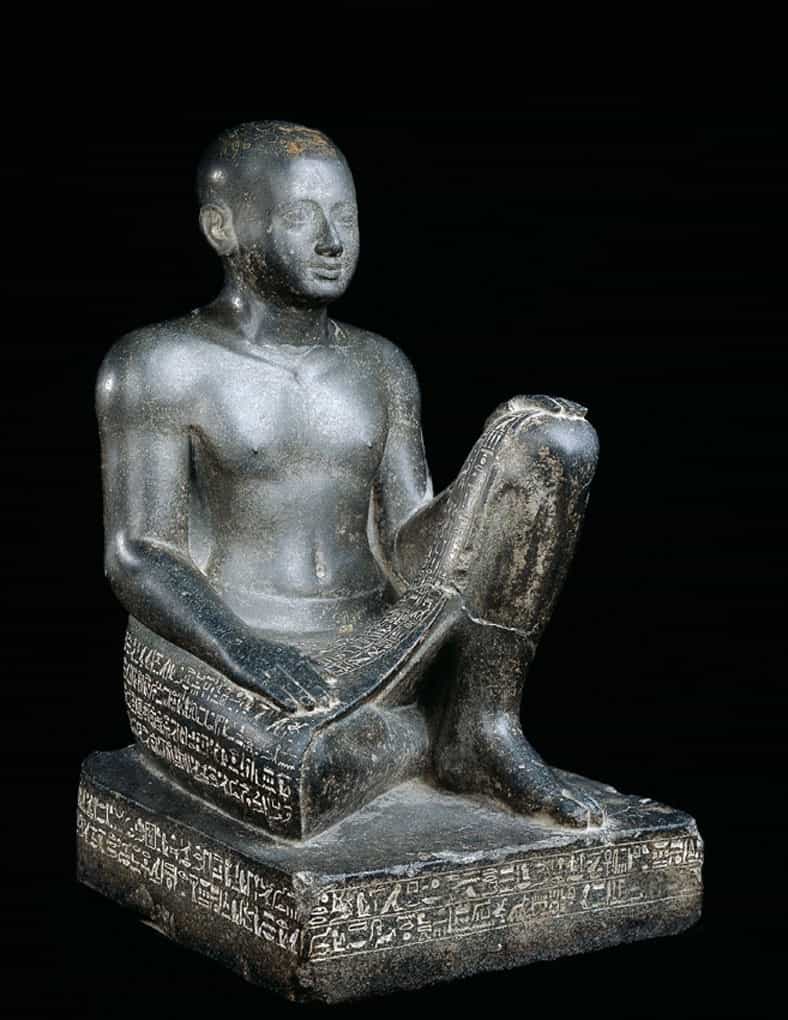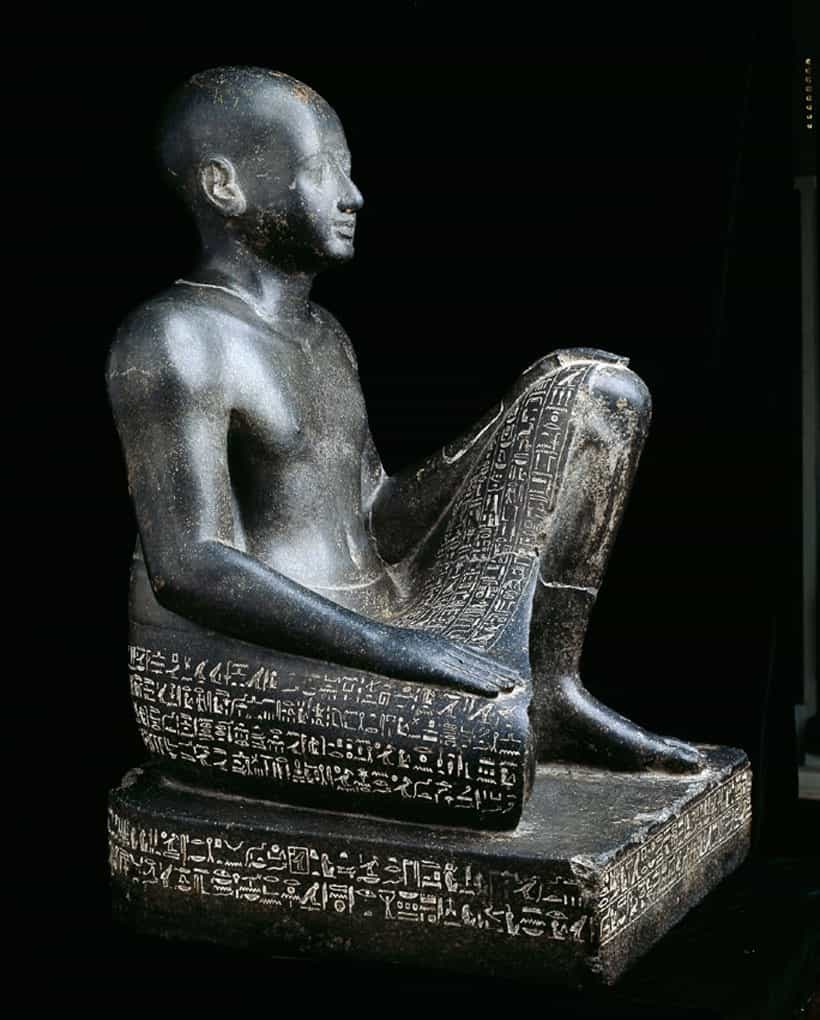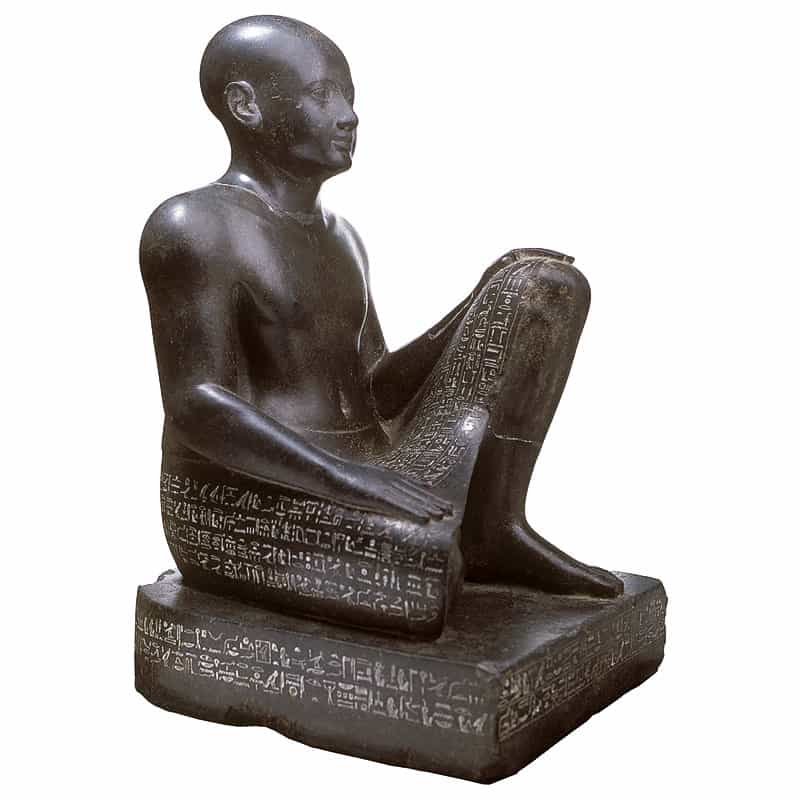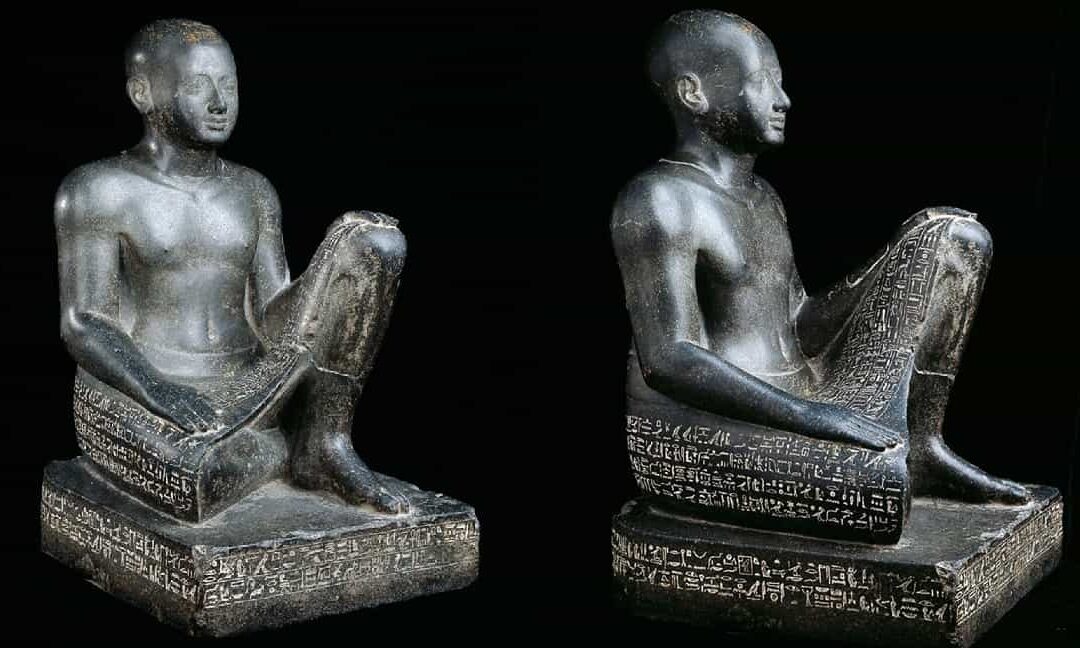The statue of the vizier Hor is a remarkable piece of ancient Egyptian art from the Third Intermediate Period. It depicts the vizier seated in the traditional way, with one leg bent up against his chest and the other resting on the ground. This posture was commonly used by Egyptian peasants and is still used to this day.
Hor is shown with a shaved head, delicate features, round cheeks, and a small mouth. He wears a kilt that is held up by a large belt inscribed with details of his life, including his titles and those of his father, who was a priest during the 22nd Dynasty.
The base of the statue is inscribed with an offering formula to Amun-Ra, the god who allowed Hor to erect a statue of himself in the god’s temple. The inscription also refers to the king’s appointment of Hor as vizier while he was still Superintendent of the Treasury of the Temple of Amun.
Unfortunately, the name of the king is not specified in the inscription, but we know that Hor’s father was named luatjek, which suggests the period of the 22nd Dynasty. This hypothesis is supported by the style and pose of the figure.
During the 22nd Dynasty in Upper Egypt, there were two viziers. One is referred to during Year 14 of the reign of King Takelot I, and the other is cited in a document during Year 8 of King Shoshenq III. The statue of Hor was found in Karnak Cachette and is now in the Egyptian Museum in Cairo, with the inventory number JE 37512.
The statue of the vizier Hor offers a glimpse into the life of one of the most important officials in ancient Egypt. The inscription on the base of the statue provides valuable information about Hor’s life and the political situation during the 22nd Dynasty.










